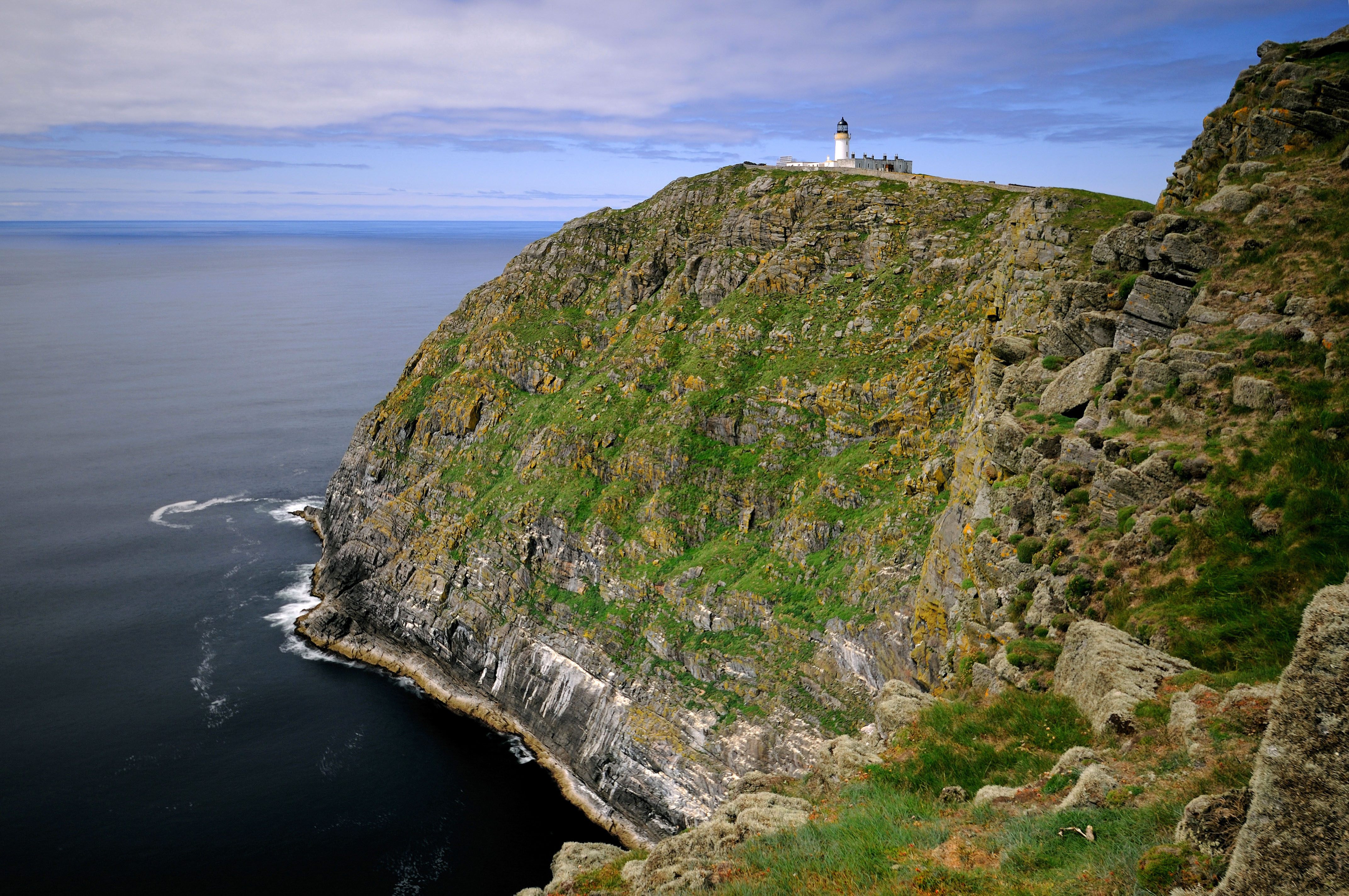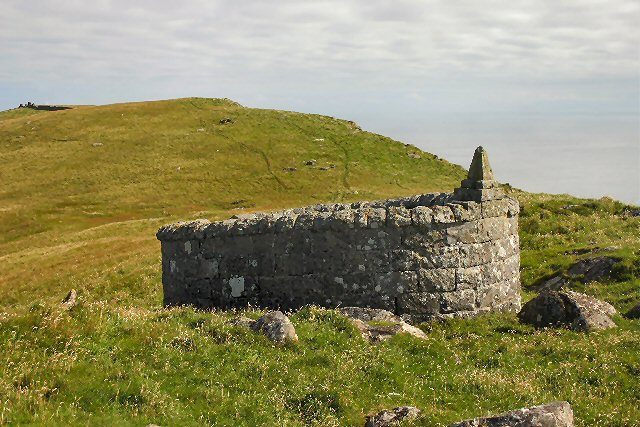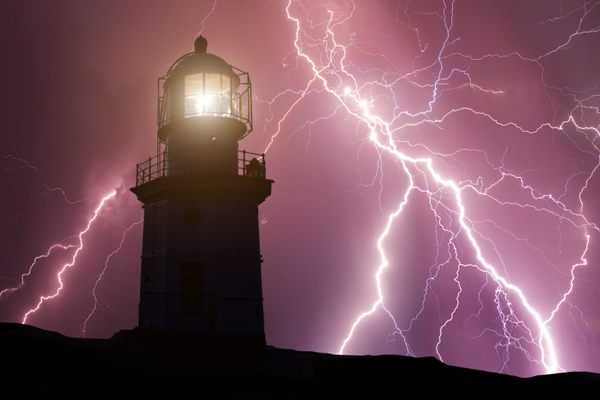This Uninhabited Island Is Home to the Highest Lighthouse in Scotland
The last resident left Barra Island in 1980, but a tireless beacon remains.

Every day of Islands Week, we’re profiling one uninhabited island. Find more here.
Those who traveled to from mainland Scotland to the island of Barra Head in the 19th century described a journey involving “innumerable jumblings by land and sea.” The island is the southernmost in the Outer Hebrides, and is unprotected from the ravages of ocean weather. As the National Trust for Scotland puts it, “the western cliffs plunge with giddying suddenness” down into the sea, and storms slam right into them.
In the fall of 1833, the Barra Head Lighthouse flicked on for the first time, meant to help sailors near those cliffs deal with the extraordinary waves. As settlements rose and fell around it, the lighthouse housed keepers steadily for over a century. Many hosted guests who had come to study the island’s flora and fauna, or just to see what life was like. At least one keeper buried family members there, in a small stone-walled cemetery near the tower.
In 1869, the ornithologist H.J. Elwes described looking down from the lighthouse on a blustery day as flocks of birds wheeled in the wind below. “The the air was so thickly crowded with birds as to produce the appearance of a heavy snowstorm,” he wrote. “The howling of the tremendous gusts of wind coming up from below as if forced through a blast-pipe made it almost impossible to hear a person speak… It was the grandest sight I ever experienced.”

But the lighthouse couldn’t save everybody: After World War II, scraps from a Blenheim bomber were found on the face of the cliff. “Apparently, it had crashed in a storm and no one had heard it,” the Northern Lighthouse Board reports.
In October of 1980, a crew came out to the lighthouse, converted it to automatic operation, and brought the last keeper back with them. No one lives at Barra Head anymore, although people still brave its waters to visit, or to rescue those who have drifted off-course.
Fans of historic buildings are trying to upgrade and preserve the lighthouse, fearing the storms will bring it down too. But these efforts have been made difficult by how hard it is to land on the island. For now, the light—the highest in all of Scotland—still spins once every thirty seconds, sweeping over the quiet graveyard, the seabird snowstorms, the crumpled bomber, and everything else we left behind.
















Follow us on Twitter to get the latest on the world's hidden wonders.
Like us on Facebook to get the latest on the world's hidden wonders.
Follow us on Twitter Like us on Facebook